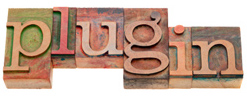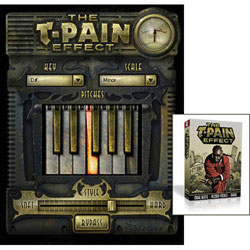Sony Sound Forge Pro has long been a staple audio editing program – basically the industry standard. But since its inception these 15 or so years ago, it has not been available for Mac users. That has finally changed.
Sound Forge Pro Mac – designed for OS X, is now available. Can I get a halleluja?
A new license is $269 (compare this to Adobe Audition – my main editor – which costs $317.98).
If you already have Sound Forge Pro for PC, you can cross-grade to the new Mac version for $239.
Recording Software
Don't Forget About These Pro Tools Stock Plugins
Sometimes when you get something for free, especially if it’s part of a package, you may not value it as much – or you may forget about it entirely. Pro Tools, the industry standard DAW (which stands for digital audio workstation – a fancy way of saying multi-track recording software) comes with a lot of plug-ins, for both effects and virtual instruments.
Here is an article by Graham, identifying three oft-overlooked, but very useful stock plugins.
- The AIR Fuzz-Wah
- The Avid Lo-Fi plugin
- dVerb
See Graham’s article about them here: http://therecordingrevolution.com/2012/08/10/3-underrated-stock-pro-tools-plugins/
VST Plugins – Add Effects and Virtual Instruments to Your Home Studio
 If you are not already with VST plugins, let me enlighten you at once. Your home studio software program probably came with at least some effects built-in, such as compression, EQ, or maybe a reverb effect. But sooner or later you’ll probably want to add to that initial collection of effects. Enter, VST, which stands for Virtual Studio Technology. It was invented by Steinberg, maker of excellent audio recording software and hardware, who hold the trademark for VST technology. But that’s not the stuff you want to know, is it?
If you are not already with VST plugins, let me enlighten you at once. Your home studio software program probably came with at least some effects built-in, such as compression, EQ, or maybe a reverb effect. But sooner or later you’ll probably want to add to that initial collection of effects. Enter, VST, which stands for Virtual Studio Technology. It was invented by Steinberg, maker of excellent audio recording software and hardware, who hold the trademark for VST technology. But that’s not the stuff you want to know, is it?
VST Effect Plugins
The most common use of VST is to add effects to tracks in your DAW, or to add editing tools to your editor. 3rd-party developers sell these effect plugins for lots of different effects like chorus, flanger, delay, filters, EQ, compressors, limiters, noise reduction, tuning effects like Auto-Tune, just to name a very few. A search on B&H Pro Audio’s website for VST Effects brings up 73 different items! One reason to use these plugins rather than, or in addition to the built-in effects on your software is that a plugin developer has designed their product with nothing else in mind, so the quality of the resulting effect is likely to be much better than one of a collection in a bundle that was a bonus to your recording program. And as I already hinted at, the sheer variety and volume of selection is another reason to use VST plugins.
Virtual Instruments
I’ve discussed virtual instruments here many times. They give us the ability to add realistic sounding drums, horns, pianos, harps, violins (do I need to go on?), etc. to our recordings without having to actually have the physical instrument. Neither do we need to have a person to play said instrument. All we need is a MIDI keyboard. Heck, if our recording software has a MIDI editor (Reaper does;)), all we need to do is draw in MIDI notes and when we hit the “play” button, the MIDI data will play the instrument. A search on the B&H site for VSTi returned 31 different results. And several of these were not just single instruments but collections or packages of instruments. For example, the Garritan Virtual Marching Band VSTi contains dozens of instruments including individual and grouped trumpets, trombones, tubas, cornets, piccolos, oboes, clarinets, and the full range of drums and other percussion instruments you’d find in a drum line. This is just one package from one developer.
How To Use VST/VSTi
Installing a VST or VSTi will place a dll file on your computer (usually into a folder called “Steinberg/VST” even if you don’t have any Steinberg programs). Most recording programs search your directories for VST or VSTi files (dll type) when they open, so you probably won’t have to do anything. The effect or instrument will just be available to you once inside your DAW.
Most DAWs work the same way. For effects, you simply click on the “FX” (in Reaper) or similar button on a track control, and choose your VST effect. Then that effect will be applied to your audio.
For instruments, it’s pretty much the same except that the track will need to be a MIDI track. Then whatever notes the MIDI data play will be heard as played on the instrument you loaded up.
So that’s it in a nutshell. Adding professional effects or virtual instruments is fast and easy and can really raise the beam on the quality of your recordings.
Cheers!
T-Pain Vocal Recording Software
 No doubt you have heard the use of tuning software (usually Auto-Tune) used not as a tool for correcting the pitch of a singer’s recording, but as an effect in and of itself to make a voice sound unnatural and “computery.” There is a hip-hop artist out there whose name is becoming synonymous with this kind of thing, and he is known as T-Pain.
No doubt you have heard the use of tuning software (usually Auto-Tune) used not as a tool for correcting the pitch of a singer’s recording, but as an effect in and of itself to make a voice sound unnatural and “computery.” There is a hip-hop artist out there whose name is becoming synonymous with this kind of thing, and he is known as T-Pain.
Now there is a tool you can buy (instant download) called The T-Pain Effect, by iZotope, that will allow you to not only apply the extreme tuning effect to your voice, but also to do beat-making using the virtual drum machine that comes with it.
There are 3 music-making tools designed for beginners (you don’t need to know much, if anything, about audio recording) that allow you to arrange beats, record your voice, and in just a matter of minutes, post your tracks on-line.
Click here or on the picture to buy it and download it right now.
Does It Matter If The Software Doesn't Sound Like the Hardware?
There are a lot of plugins – both effects and virtual instruments – that are basically software versions of some hardware original. Much is made of how some virtual reverb effect unit or synthesizer (see our recent post about software synthesizers here: https://www.homebrewaudio.com/of-synthesizers-and-oscillators/ ) sounding very much like their physical counterparts. But what if the virtual/software versions sound nothing like the real thing, but still sound great?
Here is a post by Graham Cochrane that ponders that question:
http://therecordingrevolution.com/2012/10/05/who-cares-if-it-emulates-the-real-thing/